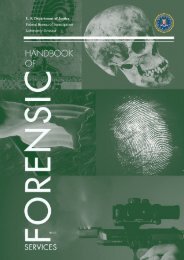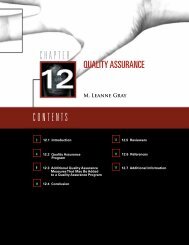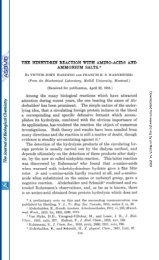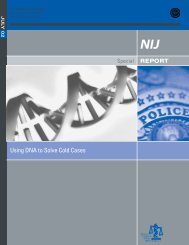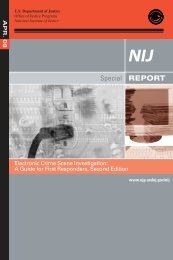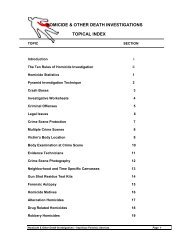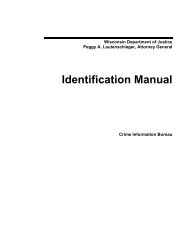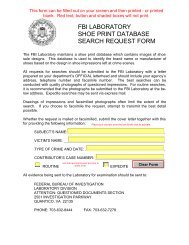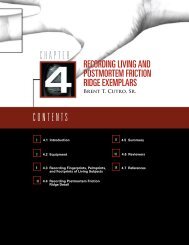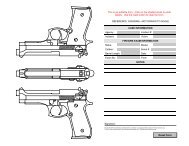Mass Fatality Incidents: A Guide for Forensic Identification
Mass Fatality Incidents: A Guide for Forensic Identification
Mass Fatality Incidents: A Guide for Forensic Identification
- No tags were found...
Create successful ePaper yourself
Turn your PDF publications into a flip-book with our unique Google optimized e-Paper software.
Section 4.7: <strong>Identification</strong> of Human Remains—RadiologyI. IntroductionRadiology provides vital support to themedical examiner/coroner. The radiologistconducts radiograph/x-ray examinationsto detect radiopaque evidence; identifiesremains by comparing antemortem withpostmortem radiographs/x-rays; andassists pathologists, anthropologists,and odontologists in the interpretation ofradiographs/x-rays. The medical examiner/coroner should consider establishing aradiology team early on in the investigationprocess.II. Equipment/SuppliesPrinciple. The radiology team should usethe necessary equipment and supplies toradiograph/x-ray remains.Procedure. The radiology team leader isexpected to—A. Address radiation safety issues suchas shielding.B. Identify sources of equipment or additionalfacilities.III. RadiographsPrinciple. Take radiographs/x-rays of allrecovered remains be<strong>for</strong>e <strong>for</strong>ensic processing.The radiology team may use additionalimaging <strong>for</strong> clarification of detailsand potentially <strong>for</strong> primary radiographicidentification. The radiology team leader isexpected to check all radiographs/x-rays <strong>for</strong>supporting or exclusionary in<strong>for</strong>mationbe<strong>for</strong>e the release of the remains.Procedure. The radiology team is expectedto—A. Conduct an initial radiograph/x-ray ofthe remains.B. Conduct additional radiographs/x-raysas requested by other <strong>for</strong>ensicspecialists.C. Appreciate special considerations(e.g., making radiographs/x-rays of thehands and feet of the flight crew) asthey relate to the incident.D. Assist with the comparison of antemortemand postmortem radiographs.Summary. Radiology is a vital early stepin processing the remains, supporting orexcluding potential identification andpotentially serving as a primary means ofidentification.41




